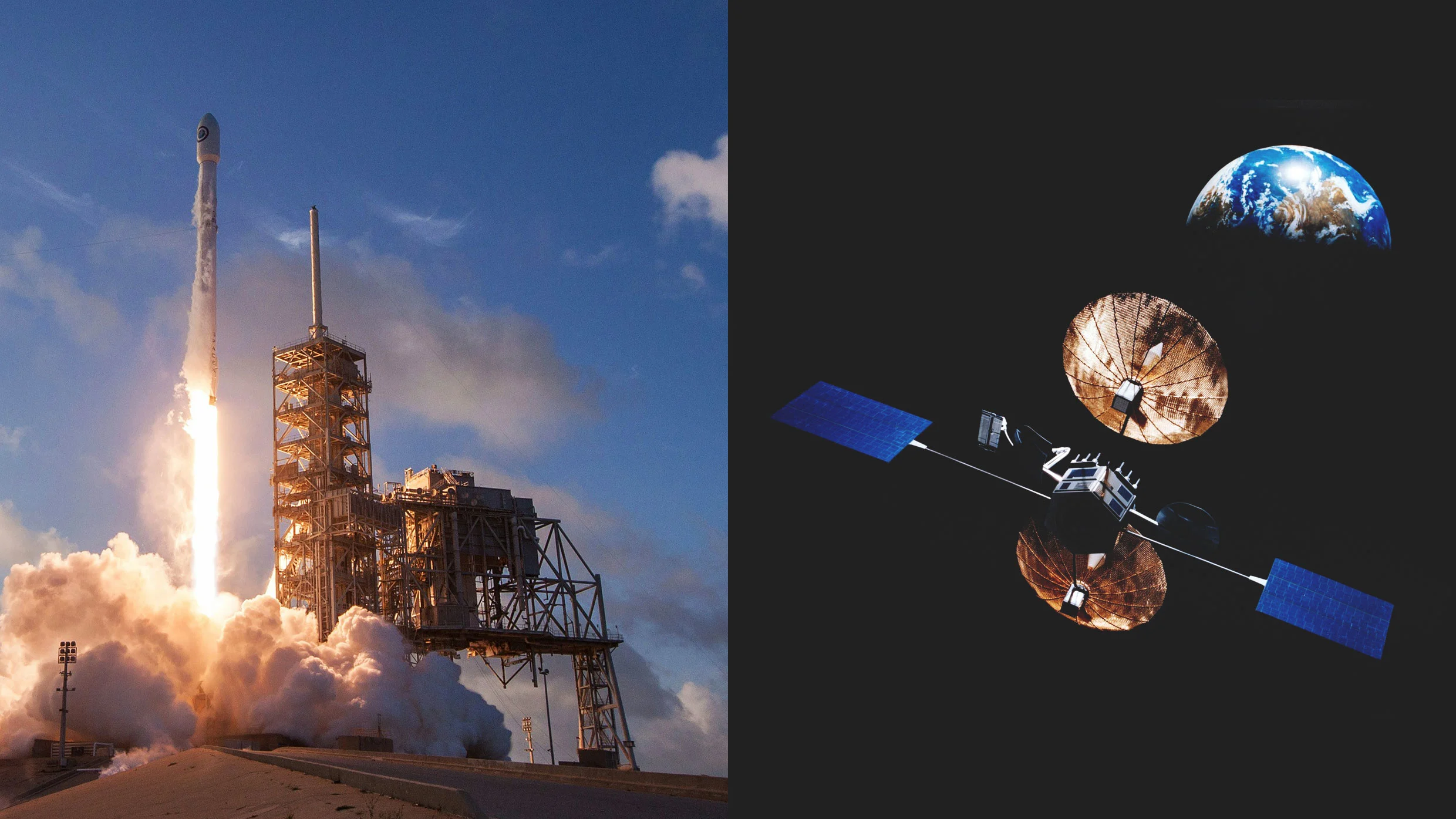With satellite mega-constellations like spacex’s starlink deploying thosands of spacecraft, monitoring their health has become an enormous challenge. Traditional methods can’t easily scale to handle the volume, and a single failure can cost millions.
James Murphy, AI Engineering Lead at Irish Space Technology Company Réaltra Space Systems, is addressing this by Teaching Artificial Intelligence to Spot Satellite failures beeilli they. His lightweight ai models run directly on spacecraft, Catching Subtel Warning Signs While Reduction The Data Bottleneck Between Space and Earth.
Murphy, who holds a ph.d. In Machine Learning for Satellite Anomaly Detection, Worked on Camera Systems for Europe’s Ariane Rockets that Captured ICONIC Images of the James Webb Space Telescope’s Sparation. He’s also collaborating with Dr. Norah patten, expected to become ireland’s first person in space.
Fast company spoke with Murphy about Preventing Space Disasters, Autonomous Spacecraft, and What Science Fiction Gets Wrong About Ai in Space. The conversation has been edited for length and class.
What exactly is satellite anomaly detection and why is it Critical for Modern Space Missions?
Satellite anomaly detection is the process of identifying unusual or unexpected behavior in a satellite’s systems, such as power, communications, or sensors. These anomals can result from software bugs, hardware failures, or environmental factors like radiation. Detecting Them Early is Critical Because Satellites Operate in Harsh, Remote Environments where Maintenance isn’T Possible. A small fault can quickly Escalate into a mission-enning failure. Anomaly Detection Systems Help Operators Spot and Correct Issues Before they become serial, ensuring satellites story functional, safe, and reliable.
How can an Ai Model Catch a Potential Satellite Failure Before It Happens?
Imagine a satellite’s battery is slowly degrading due to repeated charging cycles. Normally, Engineers Monitor Voltage and Temperature Levels, but subtle warning signs might be too Fant for humans to notice. An AI Model, Trained on Years of Satellite Telemetry Data, Learns what healthy battery behavior looks like.
One day, it spots a Slight but consistent increase in temperature during charging, even though it’s still within safe limits. The model flags this as an anomaly. Engineers Investigate and Discover Early Signs of Thermal Runaway. They adjust the satellite’s power schedule, preventing a potential battery failure that Cold’ve cripped the mission.
With spacex, blue origin, and other companies rapidly expanding space operations, how is AI impacting the competitive landscape?
AI is enabling autonomy and scalability. With Mega-Constellations Like Spacex’s Starlink and Amazon’s Kuiper Deploying Thousands of Satellites, The Workload on Human Operators Backets Overwhelming.
AI-Driven Anomaly Detection Reduces This burden by continuously monitoring telemetry, flagging unusual behavior, and even initiating automated responses. This allows operators to focus on critical issues rather than sifting through routine data. By MainTaining Reliability Across Large Fleets with Minimal Human Oversight, Ai Not Only ENLY ENSURERES MESSION SUCCES AT SCALE but also Gives BOTHES BOTHES BOTHES BOTHES BOT ALESO GIND BOUT ALESO GIVES BOT ALESO GIVES BOT ALSO Edge in Managing Complex Space Systems.
You’ve worked on making ai models lightweight enough to run directly on satellites. Why does this matter for the space industry, and what business advantages does it create?
Running ai models directly on satellites matters if it enables real-time decision-making and overomes a major bottleneck in space missions: limited data transmission.
Satellites generate far more data than they can send to earth due to strict link budget constraints, which limit bandwidth, power, and communication time. By processing data onboard, AI can filter, analyze, and prioritize the most Valuable Insights Before Transmission. This amplifies usable data for the models, speeds up response times, and cuts operating app.
However, there are Trade-Offs. More complex ai models typical require more powerful, and power-hungry, hardware, which is a Major Limitation in space. My Work Focuses on Designing Lightweight, Efficient Models Optimized for Constrained Environments, Balancing performance and power. This allows satellites to run ai models in orbit without exceeding power budgets, enabling deployment on Smaller Missions.
What data shows the impact so far of this new tech?
It’s hard to come up with numbers. Will it take off, or will it not? Is your money on Apple or Nokia? It’s a generational leap, but it requires that level of Trust within the Community.
In terms of time and money saving, you’re looking at potentially upwards of 90% cost savings when it comes to mission operations.
You’re working closely with the woman expected to be Ireland’s first person in space. How are you collaborating, what have to do that, and what does it mean for ireland’s role in the global space economy?
Working with Dr. Norah patten has been an incredibly inspiring and grounding experience. Our collaboration focuses on translating complex space technology, like ai-enabled satellite systems, into tangible outreach, education, and innovation options. Dr Patten Brings A Powerful Public-Facing Perspective and a Deep Understanding of the Human Side of Spaceflight, What I Contribute from the Technical and Missation Design Side.
What I’ve Learned is the Importance of Communicating Advanced Technologies in Ways that Excite and Engage People Beyond the space sector. It’s also a signal that ireland is stepping into a more visible role in the global space economy, not just as a contributor, but as a Leader in Cutting-Road are ai ai and human spaceflight. This expansion of the space industry in ireland has also brought more commercial options for companies for companies like réaltra.
Looking ahead 5–10 years, how do you see ai impacting space exploration? What New Capabilites Might We Expect to see?
I believe we’ll see spacecraft with far greenomy, Driven by AI Systems Capable of Adapting to Unexpected Conditions without Waiting for Instructions from Earth. This will be essential for deep-space missions, where communication delays make Human-in-the-Loop Control Impractical.
Ai will manage satellite mega-constellations, optimize data flows, and detect and respond to anomals at scale. Onboard Science Processing will become standard, Turning raw sensor data into actionable insurance before it’s ever downlinked. Ultimately, I Believe Ai will serve as the “co-Pilot” of space missions-Enabling Smarter, Faster, and More Cost-Effective Explosion, and Allowing Us to Go Further Than Ever Before.
What Factors will be most crucial to ai’s future role in space?
Something i Always Bring Up About AI for space is Trustworthness. As we move toward more autonomous spacecraft and decision-making onboard, Trust batooms just as critical as performance. These Systems need to be reliable, explainable, and resilient to unexpected behavior or edge cases.
It’s not enough for an ai model to work in lab conditions, it has to prove itself in harsh, unpredent environments with no Room for error. Building that Trust, through transparency, testing, and robustness, is, in my view, one of the most important challenges fighting the future of ai for space.
What’s the biggest misconception people have about ai in space, and what reality would surprise them most?
The biggest misconception is that ai in space is still a future concept, or that it requires was the sentanious robots like that there in the Science Fiction. In Reality, What Surprises Most People is just how wisepread ai alredy is in an industry that’s tradedlogially years behind the tech curve.
From autonomous docking on the International Space Station to Earth observation satellites analyzing data in real time, and even the ingenuity draone exploring mars, ai is already across across the salar salar salar salar system.
What has Science fiction Gotten right about the role of ai in space travel, what has it gotten wind, and where do you draw inspiration from beyond your Own Research Arena?
Who were still far from having a hal 9000 on board, Science fiction has been remarkably accurate in predicting the Rise of Autonomy in Space Travel. One of the best real-window examples is nasa’s inguity drone on mars.
Thanks to AI-Driven Autonomy, it has surveyed vastly more terrain than all mars raovers combined, with real-time human control. This kind of autonomy is essential when dealing with communication delays or limited contact windows. Beyond That, AI is Playing a Growing Role in Autonomous Docking, and even space debris removal.
Where Sci-Fi often Gets it Wrong is in assuming ai must be fully sentient to be useful. In reality, narrow ai, designed for specific tasks, is alredy transforming space missions.
The Early-Rate Deadline for Fast Company’s Most Innovative Companies Awards is Friday, September 5, at 11:59 PM Pt. Apply today.












